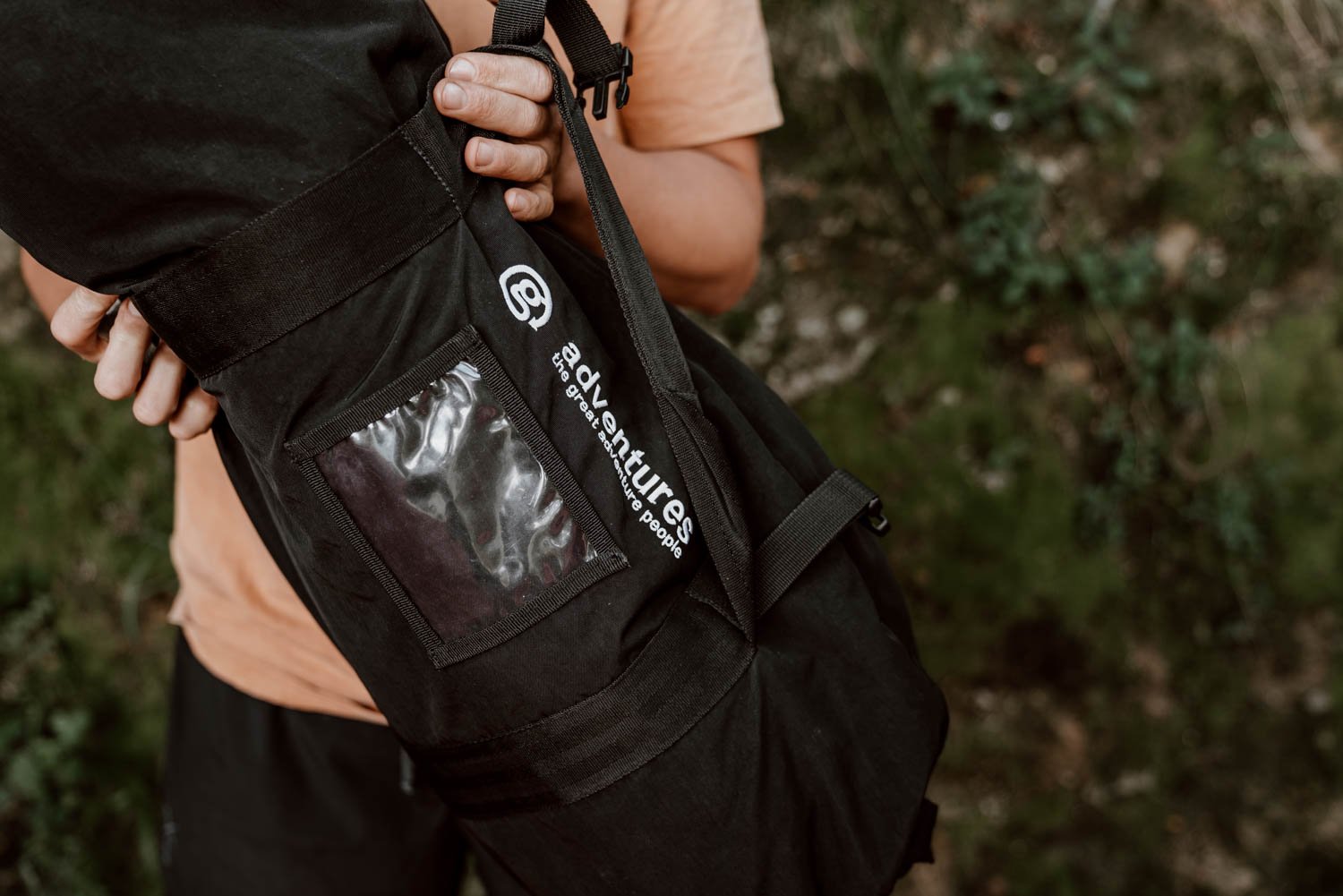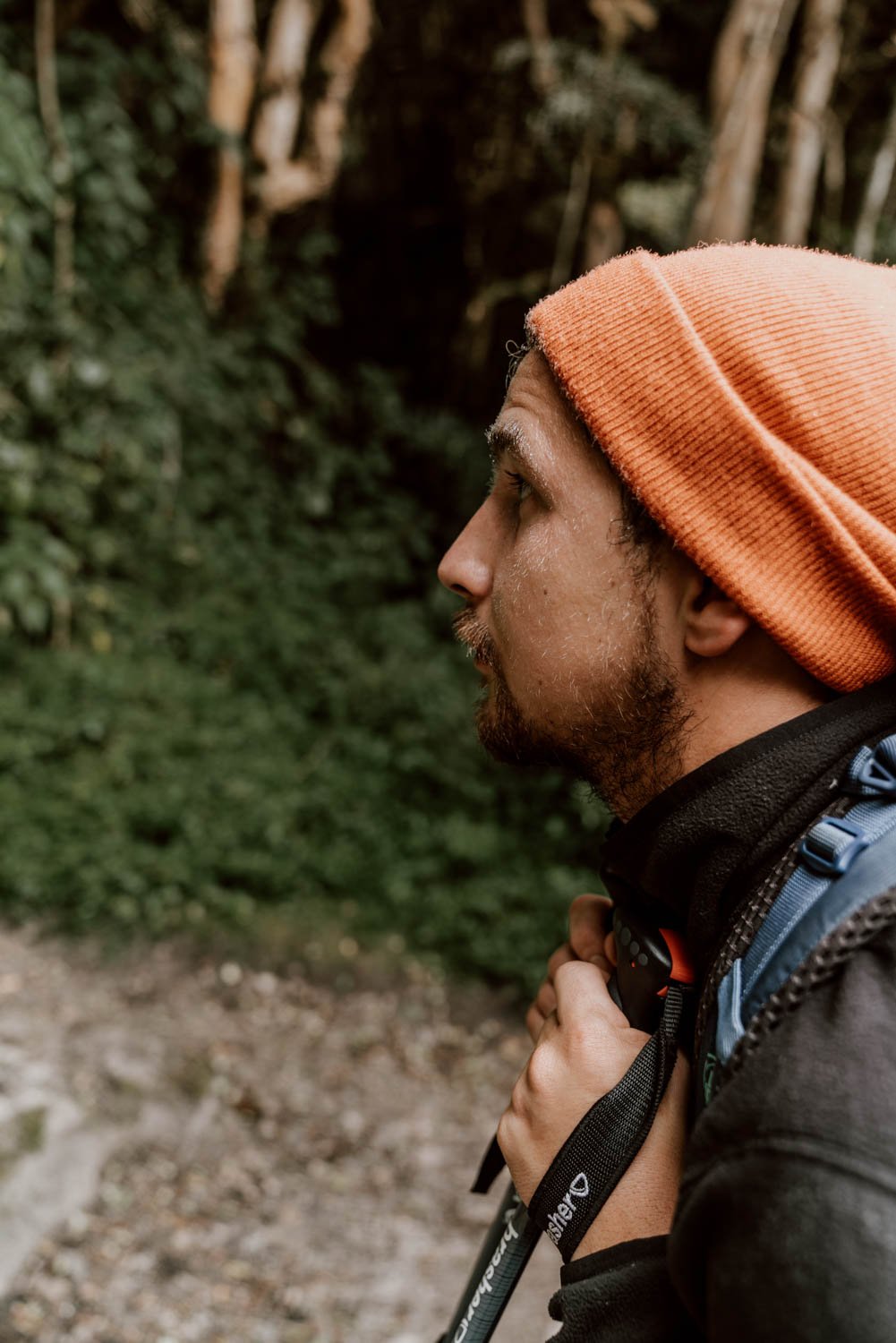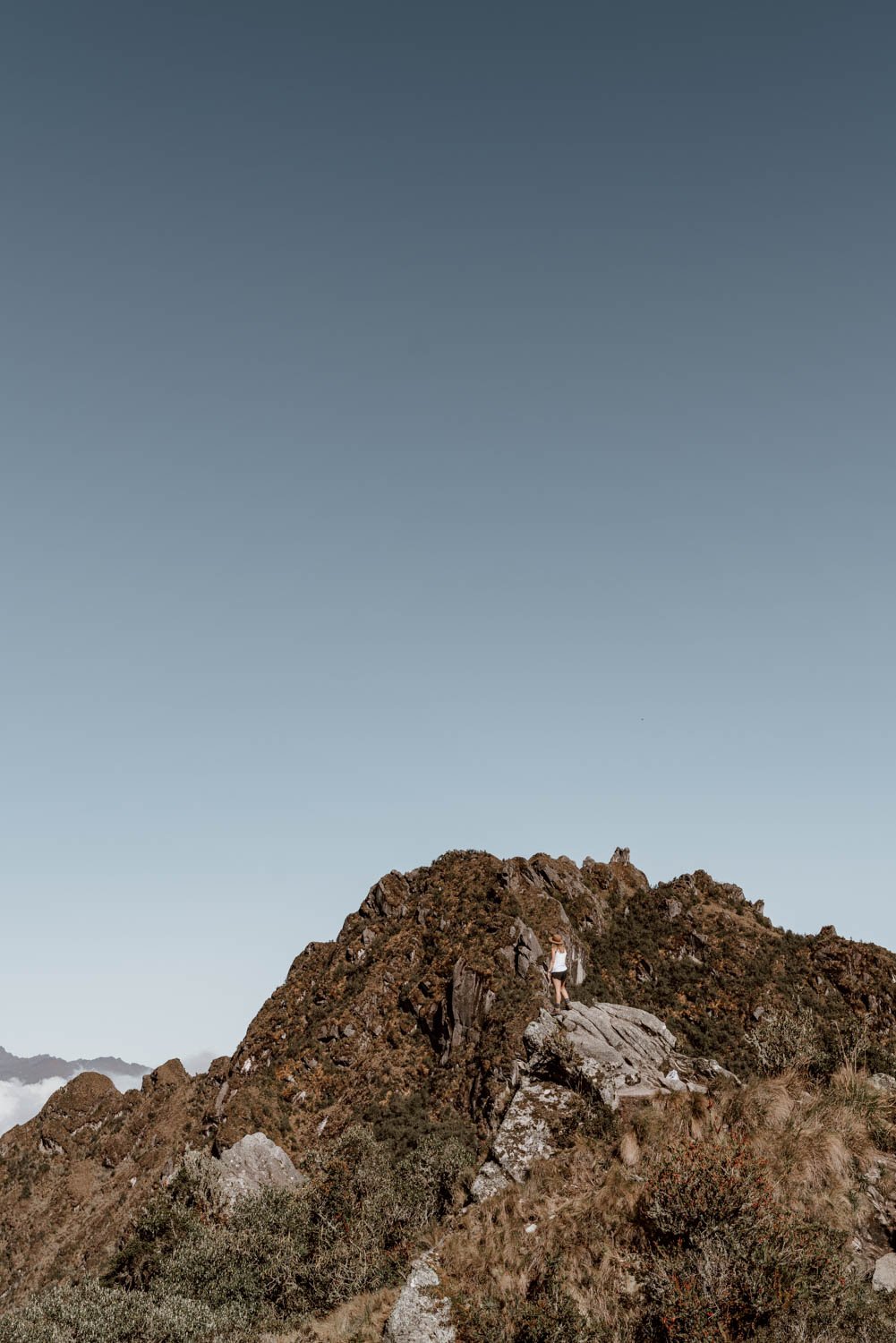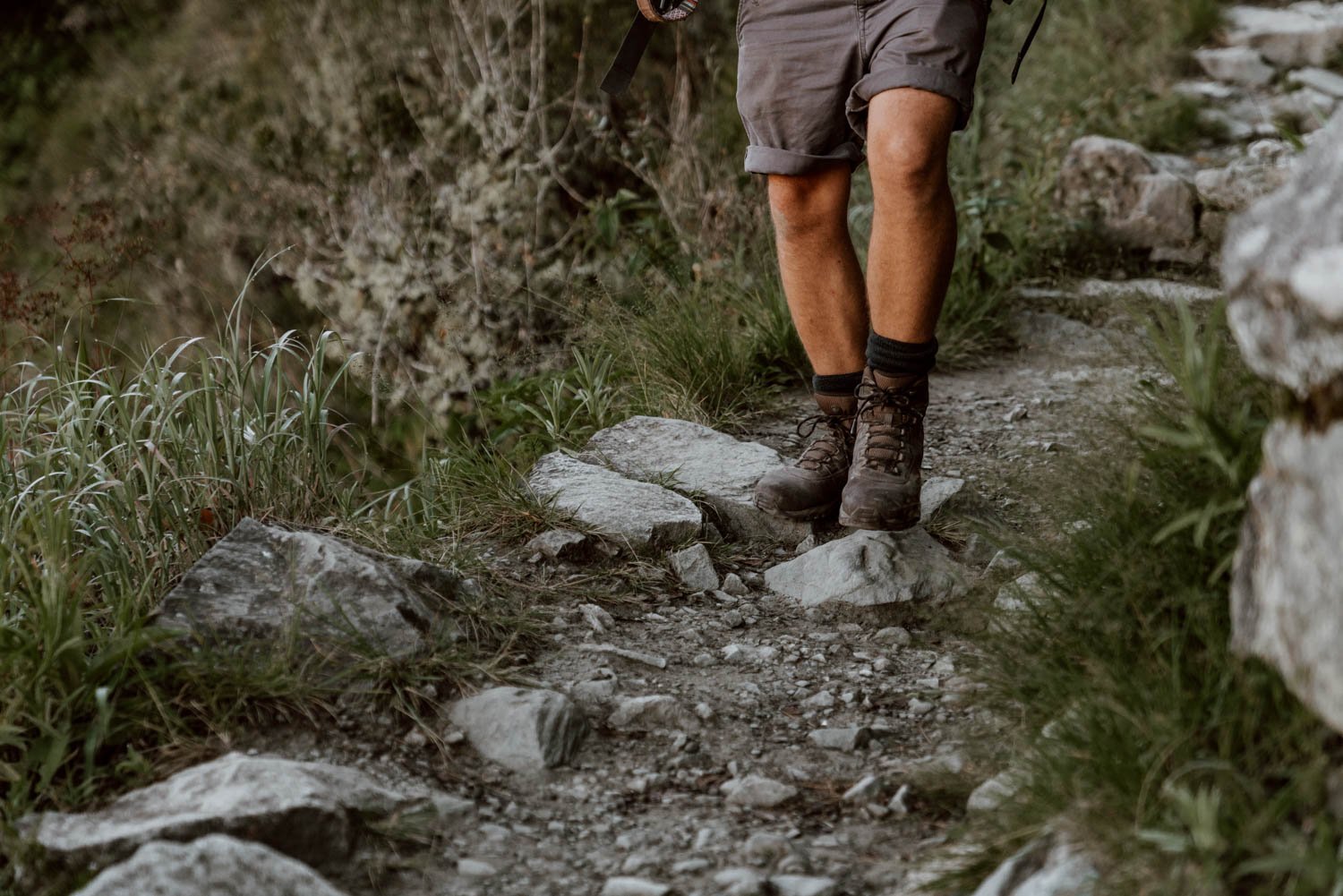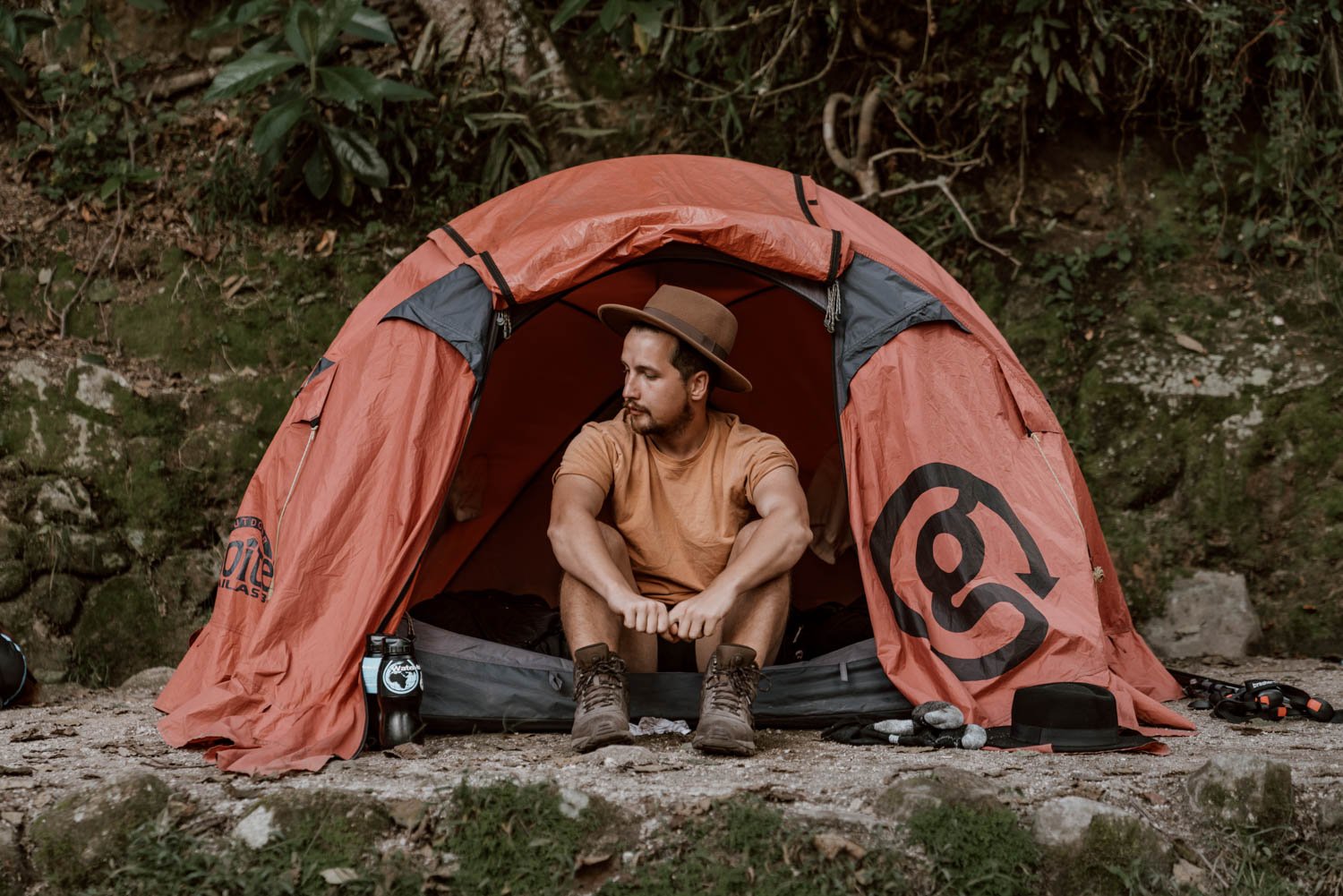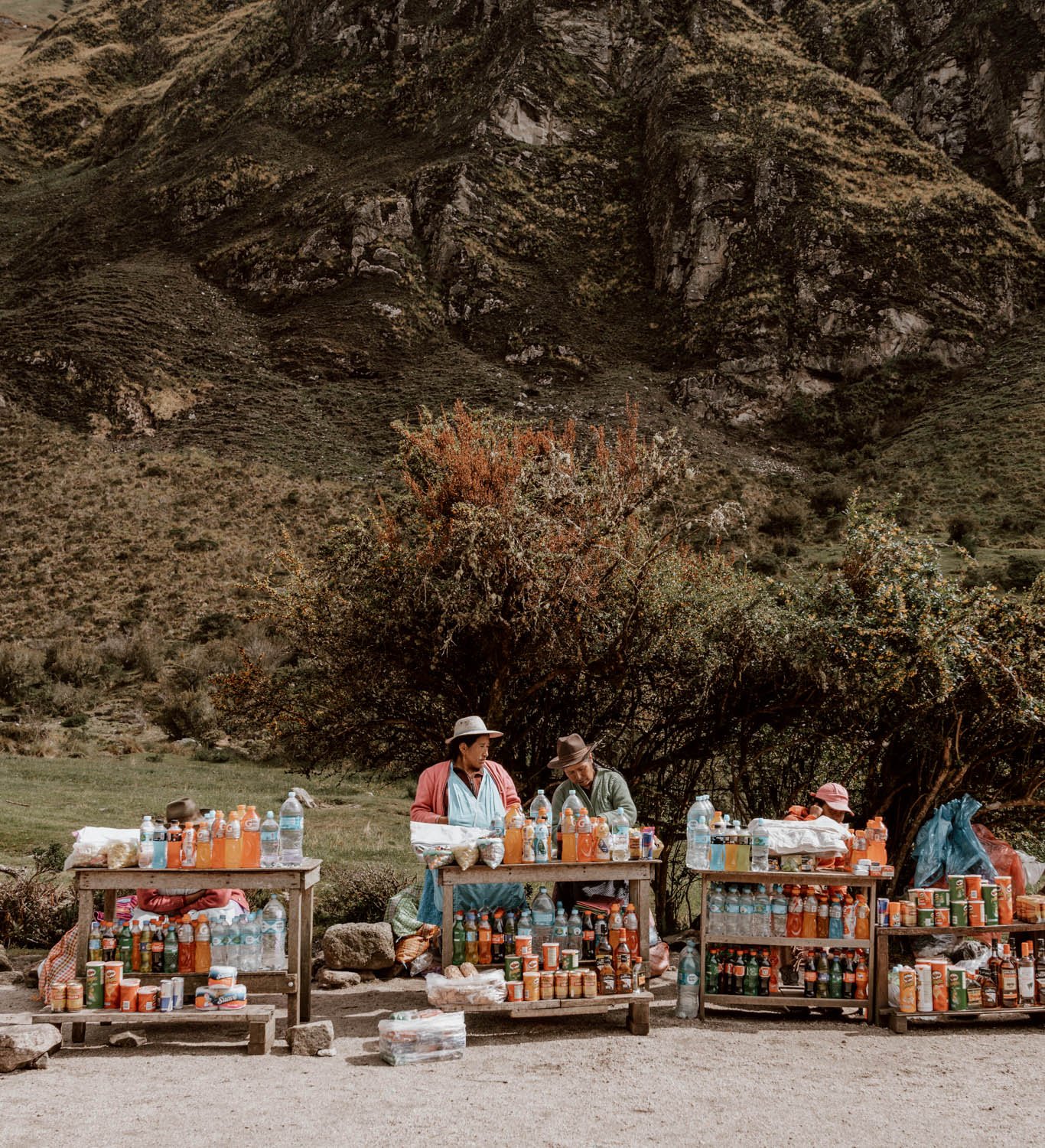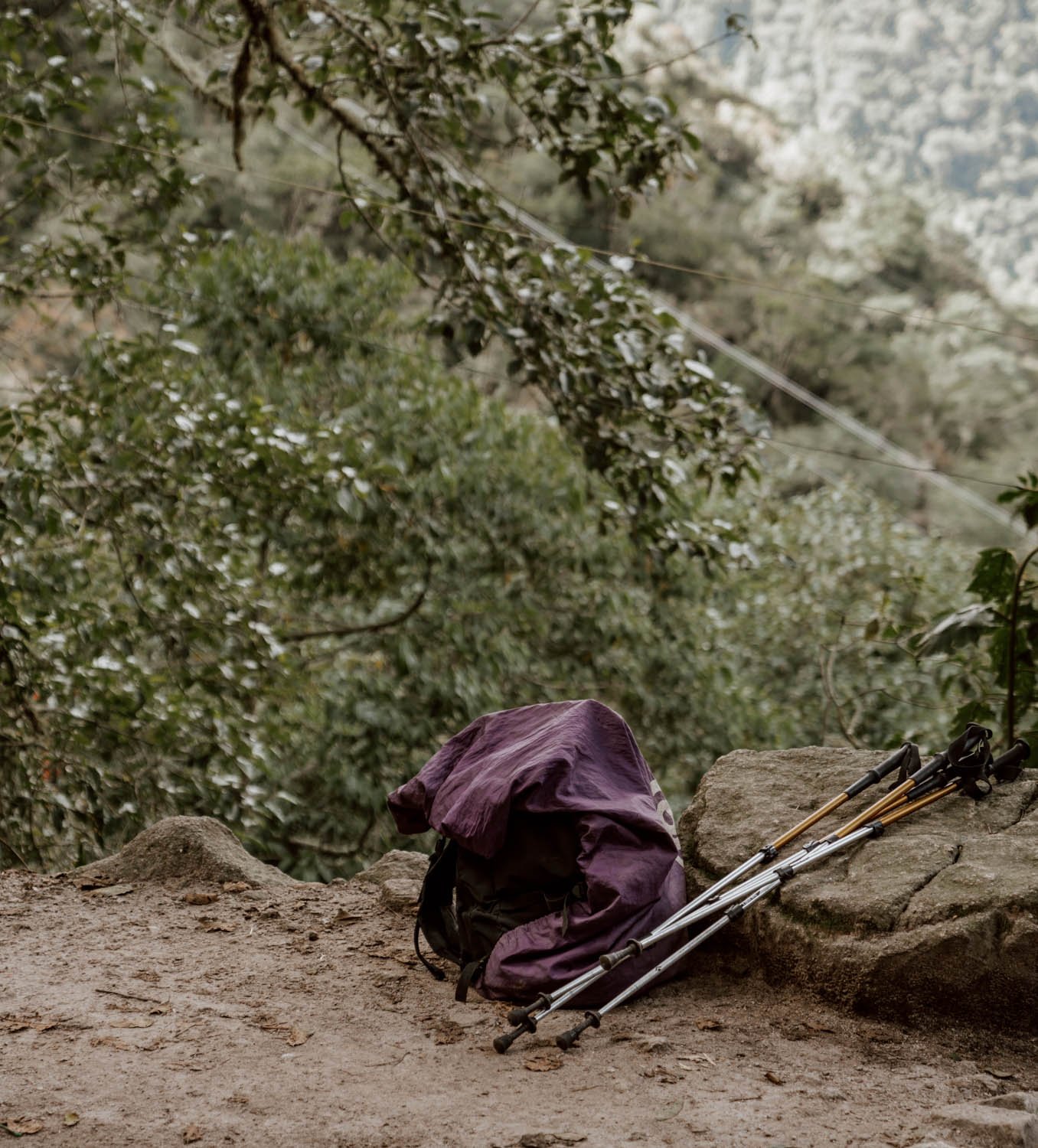Preparing to hike the Inca Trail but freaking our about what top pack? We’ve got you covered with this complete Inca Trail packing list - tried and tested by us!
Updated January 2023
Chilly nights and warm days. Cloud forest and Incan ruins perched on mountain tops. Camping, hiking, and exploring in Peruvian valleys. Emerging through the Sun Gate of Machu Picchu whilst squinting in the early morning sunshine.
The Inca Trail is an absolutely wonderful travel experience, but deciding what to pack for its diverse temperatures and walking conditions is a little less exciting.
Now that we’ve completed our own classic 4-day Inca Trail hike, we can happily say that the majority of our packing choices were correct; that’s why we’ve created this Inca Trail packing list guide. We want to share our advice and experience to ensure that you know exactly what to bring and - just as importantly - what to leave behind for your own adventure.
Packing light and packing smart for the classic Inca Trail hike is key. After all, too much equipment will make the multi-day walk much less enjoyable, whilst forgetting essential items may make the hike memorable for all the wrong reasons.
In this post, we’ve listed the essentials that every single trekker will need to pack - whether you’re hiking in rainy or dry season, for the first time or the fifteenth time - and some of the optional ‘nice to have items’ which won’t make-or-break your trip, but may well make the entire experience that little bit more comfortable.
If you haven’t yet booked your Inca Trail Tour (it’s not possible to do the hike independently - you can only do the route with an approved provider), or want to know all the essential details for preparing for and hiking the Inca Trail, read this post.
Before You Pack Anything Though…
It’s essential to understand the logistics and limits on luggage before you pack or buy anything.
Firstly, you will be leaving most of your luggage in a secure storage room at your hotel back in Cusco, and this will be arranged by the tour company. Everything you need for the Trail will then be decanted into one of two bags before you leave Cusco:
Your own small daypack which you’ll carry on the Trail.
A bag supplied by your tour company, which you won’t carry.
The vast majority of tour companies include a sizable team of support staff on the Inca Trail, which includes porters who are responsible for carrying the group’s cooking and camping equipment, plus main food supplies, for the whole four days. Great news huh?
The second excellent bit of news is that these porters (who are absolute heroes by the way), will also carry a certain amount of luggage per hiker too - this service is included in your tour cost. On the G Adventures tour, we were each provided with small black duffel bags in Cusco and permitted to store upto 6 kgs of kit in each bag. The porters are then responsible for carrying these bags along the Trail, leaving them in your tent at the end of each hike stage, and then collecting again in the morning. 6 kgs appears to be the standard allowance amongst tour providers, but do make sure that you confirm with your own tour company well in advance.
So, when packing for the Inca Trail, you can rest assured that you will not have to carry the vast majority of items on the Trail itself. Instead, you will just carry the essentials in your own daypack and store everything else in a bag carried by a fantastic Peruvian porter.
The tour company will also provide your tent.
The Inca Trail Packing List
The good news is that, if you’ve ever hiked or spent anytime backpacking before, then you will already have a lot of the necessary equipment hanging around your home. If not, then much of the equipment you’ll need to buy will be incredibly useful on your Peruvian adventures and future travels!
Your Passport
You cannot enter the Inca Trail without first getting your passport details checked and verified with your permit at the Km.82 checkpoint. Also, you need your passport to enter Machu Picchu. Photocopies are not a suitable substitute for the original and the passport also has to be the same one you used to book the Inca Trail tour.
No passport, no Inca Trail.
So yeah, don’t forget your passport.
Inca Trail Clothes
Get these wrong, and you’ll definitely be too cold or too wet at some point on the Trail.
Whether you’re hiking in dry season (April - October) or wet season (November - March, note that the Trail is closed in February), prepare for some rainfall and be comfortable with the fact that you will re-wear various items of clothing along the way.
We recommend the following:
1 x Waterproof jacket (with hood) | We use these excellent ones from North Face.
1 x Lightweight Fleece (Berghaus for Emily, North Face for Andrew)
3 x Vests / t-shirts for hiking. Sports vests and t-shirts, or hi-wicking versions, are the best for hiking rather than cotton ones which grow heavy with the sweat and dirt. Also, white is a bad idea
2 x t-shirts to change into at camp and for the return trip to Cusco
1 x long-sleeved shirt or t-shirt
1 x warm hat / beanie for the cold nights - we also took wide-brimmed hats to protect against the sun, or cap is a good alternative addition.
1 x pair of lightweight hiking trousers (this pair by Brasher for Andrew) or these hiking leggings (Emily will never switch back to trousers after wearing these for all our hikes in Peru)
1 x pair of lightweight shorts to hike in (it gets hot on the Trail)
3 x good hiking socks (we’re big fans of Brasher’s hiking socks)
4 x pants (that’s underwear for any non-Brits reading this)
2 x sports-bras (ladies only)
1 x set of thermal layers (these are essential for the chilly evenings, and you’ll probably sleep in these, particularly in dry season when the temperatures are lower at night)
1 x sunglasses
The weather varies on the Trail, but the important point to note is that, if there’s no rain, it is always chilly in the morning, becomes quite hot in the late morning and afternoon, and will be very cold once the sun goes down. To deal with this, we preferred hiking in vests and shorts, and would then change into our warm clothes and extra layers in the evening. When leaving camp early however, we and others in our group would start off wearing hiking trousers/leggings and our fleeces, then change into our vest & shorts later on once we’d worked up a sweat.
Optional Items
Plastic Rain Poncho | This may be recommended by your guide as an extra layer of protection against the rain which will cover you and your daypack - these cost less than $1 and can be purchased in Ollantaytambo before the Trail starts. A more sustainable and long-lasting alternative to carry in your daypack throughout South America is this lightweight packable poncho.
A Packing Cube | We swear by our packing cubes, and stored our clean clothes in one in our duffel bags throughout the hike. We use these ones, which we had already packed for South America anyway.
Nicer Clothes | You may have noted from our Inca Trail posts and Instagram Stories that we did have some additional clothes with us, added to by the beautiful handmade poncho Emily bought at the G Adventures women’s weaving co-operative we visited along the way to the Trail start point. We hate always being in hiking / sports clothes, so if you have some spare room then by all means pack a nicer set of shorts or a dress or a pair of dungarees with you for those final day photos at Machu Picchu!
Inca Trail Shoes
We strongly recommend packing good quality, waterproof hiking boots for the Inca Trail.
Although the porters will walk it in Converse or old trainers, the Trail’s contours and difficult slippery underfoot conditions in sections are well-known and easy to these guys - they’ll be less so for the majority of people on a tour. A few of our group only wore trainers / running shoes for the Trail and were incredibly fortunate that we had very dry conditions throughout - trust us when we say that your best option to cover all eventualities, weather conditions, and avoid slips & trips will be sturdy waterproof hiking boots!
Andrew invested in a pair of Merrell hiking boots earlier this year (see the above picture) and has been very satisfied with their performance so far. For this trip however, Emily dug out a pair of old hiking boots by Peter Storm - and has been seriously impressed by the quality for what is a very reasonably priced pair of boots! So much so, that when these break, they’ll probably be replaced with an identical pair.
Waterproof hiking shoes are significantly lighter and provide next to no ankle support, but are also suitable for the Trail and most hikes in Peru - we used these ones by Merrell on a previous 14 month South America trip, which did a good job but we switched to boots as we wanted better ankle support.
Note that it is imperative that you ‘wear in’ these hiking boots on a few walks and hikes before setting foot on the Inca Trail; this will greatly reduce the chance of unwelcome blisters and unnecessary discomfort.
Optional Items
Flip-Flops | We didn’t bring a change of shoes for the Inca Trail, but we do sort of wish we had brought our sandals to wear after the hikes. Not essential by any means but, if you’ve got the space and spare weight, not a bad idea.
Hiking Poles | In short, hiking poles are not essential for the Inca Trail; it is 100% possible to do it without them. However, using them will make the hike easier for a number of people and result in less aches and pains during and post-Trail. As we were doing so many hikes during our four months in South America, we bought these excellent lightweight travel hiking poles in the UK. It is also possible to buy or rent hiking poles in Cusco or to rent them from your tour provider (cost approx. S/. 45 / £10 / $13.5 / €12).
Sleeping Bag
It grows very chilly in the evenings inside the tents - after all, you are up at about 3,800 metres some evenings - so this shouldn’t come as a major surprise. This means everyone on the Trail will end up sleeping in their thermals, wooly hats, and socks to stay as warm as possible - but a good sleeping bag really is the difference maker.
We both have Rab Neutrino 200s, which are fantastic, lightweight, and pack down very compactly - but they are expensive. If you’re investing in your own sleeping bag, make sure to read this guide on how to choose the right travel sleeping bag before buying anything.
Just remember, the bulkier and heavier the sleeping bag, the fewer clothes you will be able to bring on the Inca Trail due to size and weight restrictions on the duffel bag.
Note that, if you do not bring your own sleeping bag, then it is possible to rent one from your tour company (approx S/. 45 / £10 / $13.5 / €12) or at one of the outdoors shops in Cusco. A few people on our tour rented from the company and the sleeping bags did the job. However, they are bulky when rolled and weigh about 2.5kgs, which will eat into your duffel bag space and allowance.
A very thin sleeping mat was provided by the tour company, but slightly better air-mattresses are available to rent too (S/. 45 / £10 / $13.5 / €12). Again, these will go into your duffel bag and weigh 1 kg (they’re pretty large too); Emily opted for one and it did improve the sleeping situation a bit, but they are not 100% essential.
Optional Item
Inflatable Camping Pillows | For our three-week overland camping trip in Africa, we bought these two inflatable camping pillows which pack down to the size of a mini Coca-Cola can when not being used. We had them on the Inca Trail and they continued to do a decent job! You could however always roll up some clothes or use your bus travel pillow
Headtorch
One of our essential pieces of backpacking travel kit, you absolutely need a headtorch on the Inca Trail.
The tour companies will provide lighting during dinner, but after that your campsite will be pretty much pitch black, and a travel headtorch is necessary for light inside your tent, on your way to the bathroom (or bush), and navigating your way towards the Sun Gate entrance whilst it’s still dark.
We have used these Petzl ones for the last four years, and highly recommend them.
Note that a small lightweight torch is a good alternative option, it just means you don’t have both hands free when you need them.
Inca Trail Toiletries
Toiletries are the one area where it’s really easy to overpack for the Inca Trail, thereby adding a lot of bulk and unnecessary weight on your shoulders. From our experience on the Trail and various other multi-day group hikes, we think people can be classed into two groups when it comes to ‘hiking hygiene’:
Those who will take a cold shower rather than being a little smelly.
Those who will take being a lot smelly over taking a cold shower.
We fall into the latter camp, and we’d encourage you to join us there (hold your nose though!). With that in mind, the essential toiletries for the Inca Trail are:
1 x toothbrush (we use these bamboo ones) + toothpaste (have recently made the switch to toothpaste tabs, better for the environment and perfect for camping without a good water supply)
1 x cleanser (we took micellar water) and reusable bamboo pads.
1 x quality suncream and this one for Emily’s face
1 x deodrant
1 x lip balm (be sure to get one with sunscreen)
1 x roll of toilet paper / pack of tissues
1 x travel hand-sanitiser
1 x bug-spray. We use and recommend Incognito which is non-toxic, not tested on animals and, most importantly, actually works very well.
Storing your toiletries in a separate case or old plastic bag is a good idea.
Note that babywipes / wetwipes are a popular option on hikes like this, but they are riddled with plastic and therefore massively unsustainable (i.e. if you discard one in nature it’s going to be hanging around for a very long time). An excellent altnerative product are these biodegradable wipes, designed for cleaning dirty bodies! It isn’t a bad idea to bring your travel towel with you too (we use this one by Lifeventure), especially if you fall in to camp 1!
Travel Filter Water Bottle
Your tour should provide you with purified, safe-to-drink water at camp each night and morning; this, in addition to drinks purchased in advance and along the way plus those endless cups of tea glugged at camp).
However, reducing the plastic footprint and impact of travellers is something we are very passionate about (that was hopefully clear in the ‘toiletries’ section!), so it’s important to note that the best way to be guaranteed plenty safe-to-drink water on the Inca Trail (and throughout your travels in South America) is to invest in either a Water-to-Go or a Lifestraw travel filter water bottle. Both these bottles, which are BPA-free, have an in-built filter to remove 99.9% of harmful bacteria from water filled up from the tap, the river, and just about any other source on the road (except the sea obviously!).
We have used these bottles extensively and exclusively on travels in both Africa and South America and can’t talk highly enough of them (we filled up with ours from taps all over Peru, from two rivers on the Inca Trail, and even an ancient water fountain at Machu Picchu). Aside from cutting down single-use plastic waste, they have also saved us a lot of money overall.
If you don’t invest in one of these excellent bottles, both of which we’ve tried and tested, then at least bring a refillable water bottle with you on the Inca Trail.
This code (‘ADR15’) will give you a 15% discount on the Water-to-Go if you use it at checkout, and you can read this post to find out easy ways to use less plastic when you travel.
Alternatively, you can also buy Water to Go filter bottles on Amazon here.
Travel Powerbank
There are no charging facilities on the Inca Trail, so you will need to be judicious and conservative with your phone use (we recommend putting it on battery saver and aeroplane mode) to ensure it’s still got juice for Machu Picchu photos. If you will be using it for lots of photos or video along the way, or listening to music in downtime, then we recommend bringing a powerbank / battery pack (like this excellent one by Anker) and your phone charger cable. Note that using your phone as your main torch will also sap its charge.
For the photographers amongst you, invest in spare batteries and bring enough SD cards with you. This post outlines all the travel photography equipment we use, but if you’ve got more specific questions about carrying and using photography equipment on the Inca Trail, feel free to send us an e-mail or message on Instagram.
Basic First Aid Kit + Medication
Your tour company will be carrying an emergency first aid kit and oxygen, but it’s a good idea to bring some of the essentials with you (and to have these with you when backpacking in South America more generally). We recommend:
1 x box of blister plasters (tip: don’t wait until blister has fully appeared to apply plaster)
1 x antiseptic cream
1 x pack of paracetamol
1 x pack of diarrhoea tablets (trust us, you don’t want diahorroea on the trail)
1 x pack of rehydration sachet
Also bring any personal medication you will require and keep it in your daypack.
Coca leaves and coca tea should be available on the Trail from your tour company, but if you’re worried about altitude sickness on the hike or in Peru, read this post.
Money
As we outline in more detail in our post - Everything You Need to Know Before Hiking The Inca Trail - there are a few costs along the way for which you’ll need to bring cash. Small notes and enough coins are best.
Inca Trail Backpack
What you’ll actually be carrying the equipment in is also pretty important.
This refers to the small daypack (ideally under 25 litres) which you will be solely responsible for carrying on the entirety of the Inca Trail. All this should really include are your daily essentials like snacks, water, suncream, and rain jacket, as well as your camera, phone, cash, cards, and any other valuables.
If you are travelling for a few months in South America, then you will probably just use your regular daypack - just don’t overpack it or your shoulders will feel it on the Trail. Ideally, this daypack should have good support and a waist strap and side-pockets for your travel filter water bottle.
If you are however travelling for a shorter time and travelling light, then we’d recommend one of the incredibly lightweight daypack stuff sacks which three New Zealand girls on our tour used and attracted envious looks from all of us - check it out here.
We have to say that it was in this area that we made our biggest mistake in packing for the Inca Trail. We actually only took our main backpack (emptied out, we have to add) for both of us, rather than taking two daypacks, and Andrew was responsible for carrying this. When hiking the Colca Canyon independently, the arrangement had worked a treat as the backpack has tremendous hip, waist, and back support to make it feel like we were carrying hardly anything and to reduce stress on the shoulders. Unfortunately however, this backpack also contained all our camera and blogging equipment on the Trail as there was no secure locker to leave these in Cusco - meaning Andrew actually trekked the Inca Trail with 18 kgs on his back (he’s an honorary porter now!).
Bring a PMA
The last thing to bring for the Inca Trail is something that our G Adventures guide Elias told us was the most important thing for completing the hike and having the most memorable experience.
Postive. Mental. Attitude.
When you‘re breathless on Day Two hiking at 4,000 metres and only half-way up to Dead Woman’s Pass, this really will be the thing that will get you through!
We hope that this Inca Trail Packing List has provided you with all the answers you were looking for, and some suggestions for kit and equipment which you can depend on for this adventure and many others. You can find out full information on the G Adventures Inca Trail tour here. If you have any other questions or suggestions, or would like to share your own experience, then do let us know in the comments!
If you’re still in full Inca Trail preparation mode, then read this post next: Everything You Need to Know Before Hiking The Inca Trail.
Where to Next?
The Inca Trail Hike | A Complete Guide
13 Wonderful Things to Do in Cusco
18 Things to Know Before You Visit Cusco
7 Excellent Day Trips From Cusco
A Complete Guide to Exploring Cusco’s Ruins (Without a Tour)
What You Need to Know To Visit Machu Picchu in 2023
11 Things to Know Before You Visit Rainbow Mountain
Everything You Need to Know About Cusco’s Boleto Turistico
A Day Trip to Pisac | The Ruins & Market
A Complete Guide to Visiting Ollantaytambo



